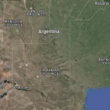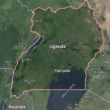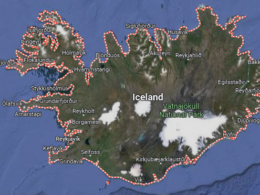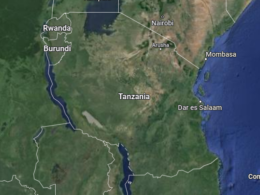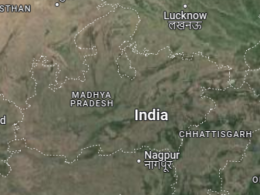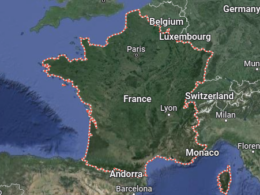The Philippines is named after King Philip II of Spain.
It has a population of over 108 million people, making it the 13th most populous country in the world.
The country has more than 7,100 islands during low tide and around 7,600 islands during high tide.
The Philippines is the largest producer of coconuts in the world.
It is one of the world’s largest producers of pineapples.
The Philippines is the world’s leading producer of abaca fiber, also known as Manila hemp.
The Puerto Princesa Subterranean River in Palawan is one of the New Seven Wonders of Nature.
The Philippines has the world’s densest population of marine biodiversity.
It is the only predominantly Christian nation in Asia, with over 86% of its population practicing Roman Catholicism.
The Philippine flag is the only flag in the world that is displayed differently in times of peace and war.
The national symbol of the Philippines is the Philippine Eagle, also known as the Monkey-eating Eagle.
The Philippines is one of the world’s top producers of geothermal energy.
It is the second-largest archipelago in the world, after Indonesia.
The Philippines has two official languages: Filipino (based on Tagalog) and English.
San Miguel Corporation, based in the Philippines, is Southeast Asia’s largest publicly listed food, beverage, and packaging company.
The San Agustin Church in Manila is the oldest stone church in the Philippines.
The University of Santo Tomas in Manila is the oldest university in Asia, established in 1611.
The Philippines was the first country in Southeast Asia to gain independence after World War II.
Filipino cuisine is a blend of Malay, Chinese, Spanish, and American influences.
The Tubbataha Reefs Natural Park in Palawan is a UNESCO World Heritage Site known for its marine biodiversity.
The Chocolate Hills in Bohol consist of over 1,200 cone-shaped hills that turn brown during the dry season, resembling chocolate kisses.
The Ifugao Rice Terraces in the Cordillera region are a UNESCO World Heritage Site and known as the Eighth Wonder of the World.
The Philippines has one of the highest literacy rates in Asia, with over 95% of its population literate.
It is the world’s largest supplier of nurses.
The Philippines is one of the world’s largest sources of seafarers.
It is the only country in Southeast Asia where cockfighting is legal and a popular sport.
The Palawan Island in the Philippines is considered the “last ecological frontier” due to its pristine natural environment.
The Banaue Rice Terraces in Ifugao are often called the “Eighth Wonder of the World.”
The Philippines has a significant Muslim population, mostly concentrated in Mindanao.
The country is prone to typhoons, experiencing an average of 20 storms annually.
The Hinulugang Taktak waterfall in Antipolo City is a national park and protected area.
The Philippines was the first country in Asia to produce and release a feature-length film.
Manny Pacquiao, a Filipino boxer, is the only boxer to win world titles in eight weight divisions.
The jeepney, a modified military jeep left by American troops after World War II, is a popular mode of transportation in the Philippines.
The Philippines celebrates the longest Christmas season in the world, starting as early as September.
The Philippine Tarsier, one of the world’s smallest primates, is endemic to the Philippines.
The Aguinaldo Shrine in Kawit, Cavite, is where the Philippine Declaration of Independence from Spain was proclaimed on June 12, 1898.
The Philippines is a megadiverse country, home to thousands of species of flora and fauna.
It has one of the highest rates of social media usage in the world.
The Ilocos region is known for its historic churches and Spanish colonial architecture.
The Balangay, an ancient boat used by Filipino ancestors, is considered the oldest watercraft found in Southeast Asia.
The Philippines has one of the highest incidences of natural disasters globally, including earthquakes, volcanic eruptions, and typhoons.
The Barasoain Church in Malolos, Bulacan, is known as the “Cradle of Democracy in the East” for hosting the First Philippine Congress.
The Philippines is the world’s largest exporter of coconuts and coconut products.
The Philippine Eagle Center in Davao City is dedicated to the conservation of the Philippine Eagle.
The Marawi Siege in 2017 led to the city’s devastation and displacement of thousands of residents.
The Banaue Rice Terraces are over 2,000 years old and built by the Ifugao indigenous people.
The Philippines has one of the highest concentrations of unique flora and fauna per unit area.
The Taal Volcano, located in Batangas, is one of the world’s smallest active volcanoes.
The Chocolate Hills in Bohol are composed of at least 1,260 hills, which turn brown during the dry season.
The Philippines was once a colony of Spain for over 300 years.
The country is known for its vibrant festivals, including the Sinulog Festival in Cebu and Ati-Atihan Festival in Aklan.
The Tubbataha Reefs Natural Park in Palawan is a UNESCO World Heritage Site known for its diverse marine life.
The Philippine National Hero is Dr. Jose Rizal, a polymath who advocated for Filipino independence.
The country has a vibrant art scene, with Filipino artists gaining international recognition.
The Filipino martial art of Arnis, also known as Eskrima or Kali, is a national sport and considered one of the deadliest martial arts globally.
**Please note that this post may contain affiliate links. When booking through one of our links, we earn a small kickback at no extra cost to you and it’s a big help to keep the site up and running.



